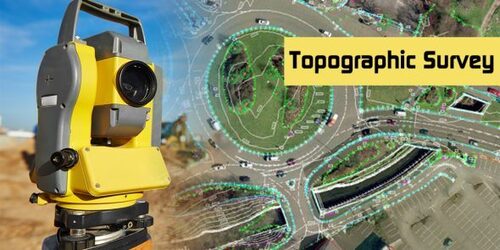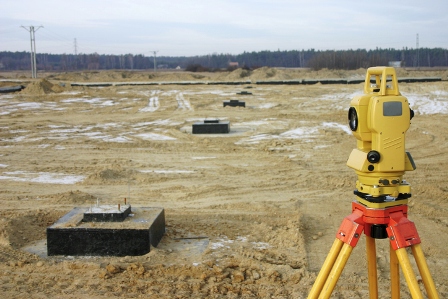Key Steps in Setting Out Engineering for Effective Construction Execution
Key Steps in Setting Out Engineering for Effective Construction Execution
Blog Article
Vital Devices and Techniques in Setting Out Engineering
The technique of laying out design counts greatly on a collection of crucial tools and methods that underpin the accuracy and efficiency of project implementation. Instruments such as property surveyor's levels, complete terminals, and advanced GPS modern technology are vital for establishing exact reference points. Moreover, the integration of standard approaches with contemporary methods, including geospatial evaluation and 3D modeling, uses substantial advantages in imagining site conditions. Understanding exactly how these aspects communicate is crucial for improving and reducing mistakes project end results, yet the nuances of their application frequently remain overlooked. What effects does this hold for future engineering practices?
The Importance of Accurate Dimensions

The value of accurate measurements extends past mere compliance; they are essential to the overall effectiveness of design processes. Mistakes can cause material waste, job hold-ups, and enhanced labor costs, ultimately affecting the job's lower line. Furthermore, specific measurements improve the top quality of the end product, guaranteeing that it carries out as meant and fulfills the expectations of stakeholders - setting out engineering.
In addition, the relevance of exact measurements is evident in various engineering techniques, consisting of civil, mechanical, and electric design. Therefore, promoting a culture that focuses on accuracy is essential for the future of design.
Crucial Devices for Laying Out
Laying out, an essential stage in the design and construction procedure, relies greatly on details devices that make certain accurate area and alignment of frameworks. Among these devices, the surveyor's degree stands apart, offering specific horizontal measurements essential for developing recommendation factors. This instrument allows engineers to identify elevation modifications and maintain harmony across the job website.
The total amount terminal is another important tool, integrating digital distance measurement with angular dimension capacities. This innovation improves efficiency and accuracy in recording spatial information, enabling efficient website format and planning.
Furthermore, using measuring tapes and marking devices, such as chalk lines or risks, is basic for temporarily marking limits and essential points on the site. These basic tools, though basic, are critical for making sure clear communication amongst the construction team concerning task specifications.
Finally, GPS innovation has actually gotten grip in establishing out procedures, supplying real-time positioning data and significantly enhancing accuracy over conventional approaches. Collectively, these important tools form the foundation of effective laying out practices, inevitably adding to the effective execution of engineering and construction tasks.
Advanced Evaluating Techniques
Advanced surveying techniques play a critical duty in improving the accuracy and effectiveness of engineering projects. These strategies encompass a variety of approaches that offer accurate information for design and construction. Typical approaches, such as leveling and triangulation, have actually evolved into a lot more advanced strategies, including Total Terminal surveys and International Navigation Satellite Systems (GNSS)
Complete Station tools integrate electronic theodolites with distance dimension abilities, allowing land surveyors to gather precise area data with great rate. This innovation considerably reduces mistakes associated with hand-operated dimensions and offers real-time information processing. GNSS supplies exceptional precision for large-scale jobs by using satellite signals to determine precise positioning, which is essential for making sure and straightening frameworks compliance with design requirements.
In addition to these devices, advanced techniques additionally include geospatial analysis and 3D modeling. These methods allow engineers to envision surface and site conditions much more effectively, promoting better decision-making during the planning phase. By using these sophisticated checking methods, engineering jobs can attain greater precision in layout, reduce rework, and ultimately boost general job success.
Digital Modern Technology in Design
The integration of electronic innovation has actually reinvented design techniques, enhancing both productivity and precision throughout different techniques. read this post here Devices such as Structure Details Modeling (BIM) assist in the visualization and administration of complex projects, enabling engineers to work together flawlessly and make informed choices. This modern technology makes it possible for the development of thorough 3D models, which can be analyzed for architectural stability click resources and effectiveness prior to building and construction starts.

The application of synthetic knowledge and maker discovering in engineering processes further enhances predictive upkeep and optimization of sources. These technologies enable the analysis of large data collections, resulting in better projecting and improved project end results. Generally, digital modern technology is improving the engineering landscape, driving technology, and making certain that jobs are completed with better effectiveness and reduced threat. As the industry remains to develop, welcoming these tools will certainly be necessary for future success.
Best Practices for Execution
When applying electronic innovation in design, it is important to establish a calculated strategy that aligns with job goals and business capabilities. A detailed assessment of existing workflows and technology framework is necessary to determine spaces and possibilities for enhancement. Engaging stakeholders early while doing so official website promotes partnership and makes certain that the modern technology meets individual requirements.

Job supervisors need to adopt an iterative execution strategy, permitting for changes based upon real-time responses and performance assessments. This active strategy not just mitigates dangers yet additionally promotes continuous improvement by incorporating lessons discovered.
Verdict
To conclude, the assimilation of important tools and progressed strategies in laying out design is essential for making certain accuracy in dimensions and effective job execution. Utilizing instruments such as property surveyor's degrees, overall stations, and GPS technology, alongside modern surveying methods, enhances precision and minimizes the chance of errors. Adopting ideal techniques in application even more optimizes these processes, ultimately cultivating boosted job outcomes in the engineering and construction sectors.
The technique of establishing out engineering relies heavily on a collection of essential devices and methods that underpin the accuracy and effectiveness of task execution.Additionally, the importance of exact dimensions is evident in various engineering disciplines, including civil, mechanical, and electric engineering. By using these sophisticated surveying techniques, design jobs can attain higher precision in design, minimize rework, and ultimately boost overall task success.
In general, electronic modern technology is reshaping the design landscape, driving advancement, and ensuring that projects are finished with higher performance and decreased threat (setting out engineering).In conclusion, the assimilation of necessary tools and progressed strategies in setting out design is important for making certain precision in measurements and effective project implementation
Report this page